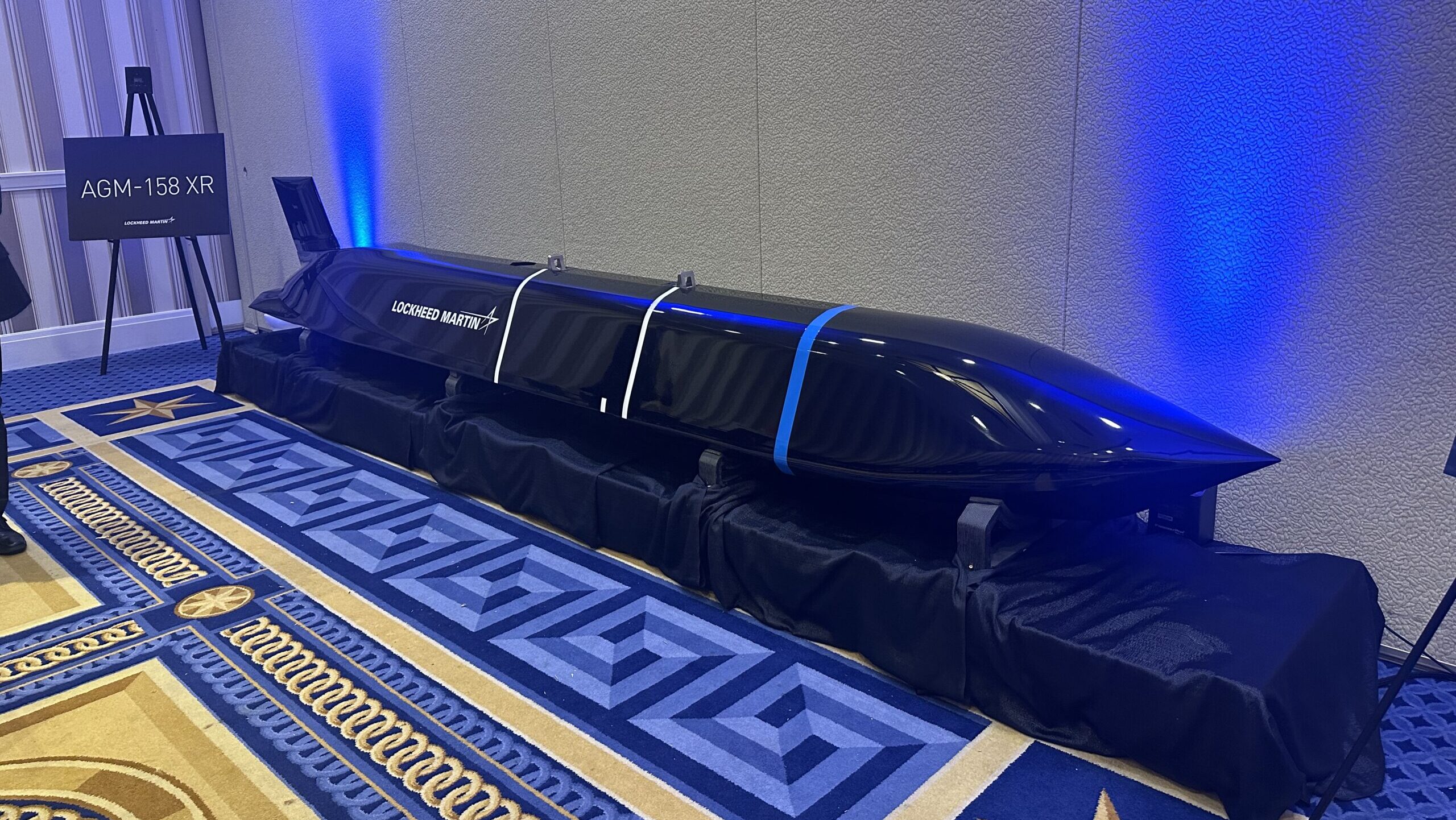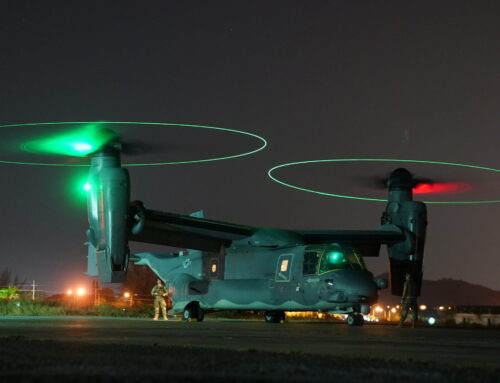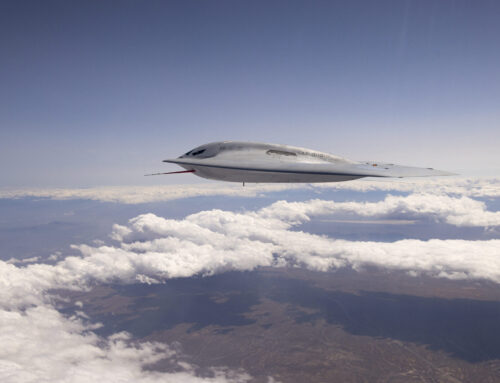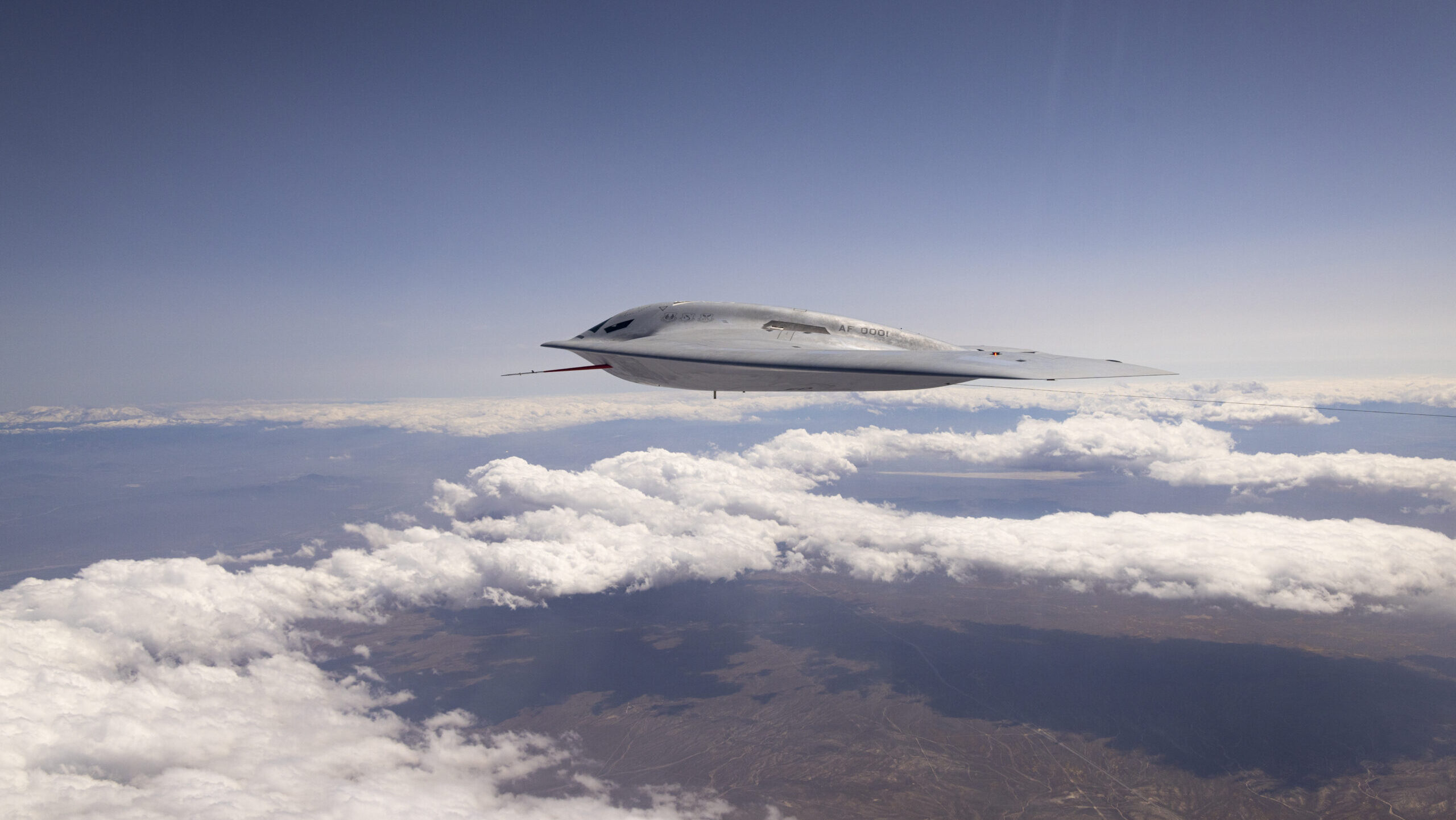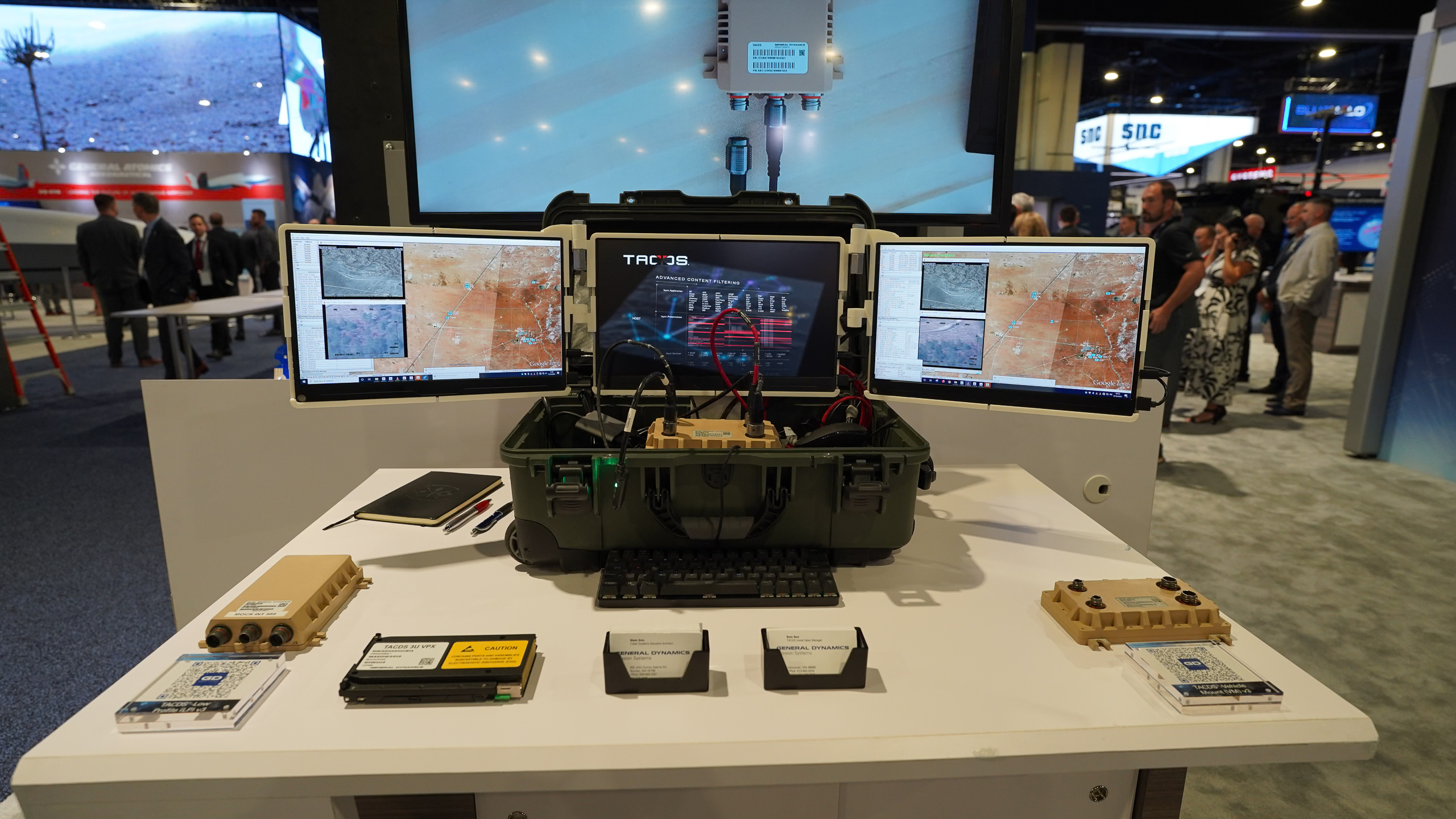A model of Lockheed Martin’s AGM-158 XR. (Valerie Insinna/Breaking Defense)
WASHINGTON — A new “extreme range” prototype of Lockheed Martin’s AGM-158 Joint Air-to-Surface Standoff Missile could be ready for flight testing in one or two years, a company official said today.
The Pentagon has not committed to buying the new weapon, known as AGM-158 XR, said Michael Rothstein, Lockheed’s vice president of air weapons and sensors. However, Lockheed is putting its own funds toward early development work on the missile, which he said could “significantly” expand the missile’s reach past the JASSM and the Long-Range Anti-Ship Missile (LRASM) variants currently being produced for the Air Force and Navy.
“I can’t give you any numbers at this point from a classification perspective” on the range of the weapon, Rothstein said. “It’s not minor. It’s not on the edge.”
Lockheed envisions the XR variant as the natural follow-up to the JASSM-D and LRASM-C3 currently in development for the Air Force and Navy. The most visible difference between AGM-158 XR and previous variants is its stretched design, but Rothstein noted that there are other “smart” modifications internal to the missile to increase modularity.
The most obvious benefit of the AGM-158 XR’s longer range is that it keeps the pilot further away from a threat. And because operators won’t have to drive in close to a target in order to strike it, it also cuts down the distance it takes for a combat aircraft to refuel and rearm — saving fuel and allowing it to conduct additional strikes over a given time period, Rothstein said.
The larger, heavier size of AGM-158 XR means that it cannot be carried by the F-16 and that other aircraft like the F-35 or F-15 that could use it will not be able to fly as far, Rothstein said. But in the latter case, that impact is negated by the longer range of the weapon itself.
The AGM-158 XR is still “several years out” from being ready for fielding, Rothstein said, adding that the timing would also depend on the services’ own budget priorities.
Looking at “the operational benefits, I think the war fighters go, ‘It makes perfect sense.’ And then leveraging, rather than a new weapon, leveraging a hot production line [and] mature supply chain, all that makes sense, too,” Rothstein said. “So the initial feedback we think is positive.”


